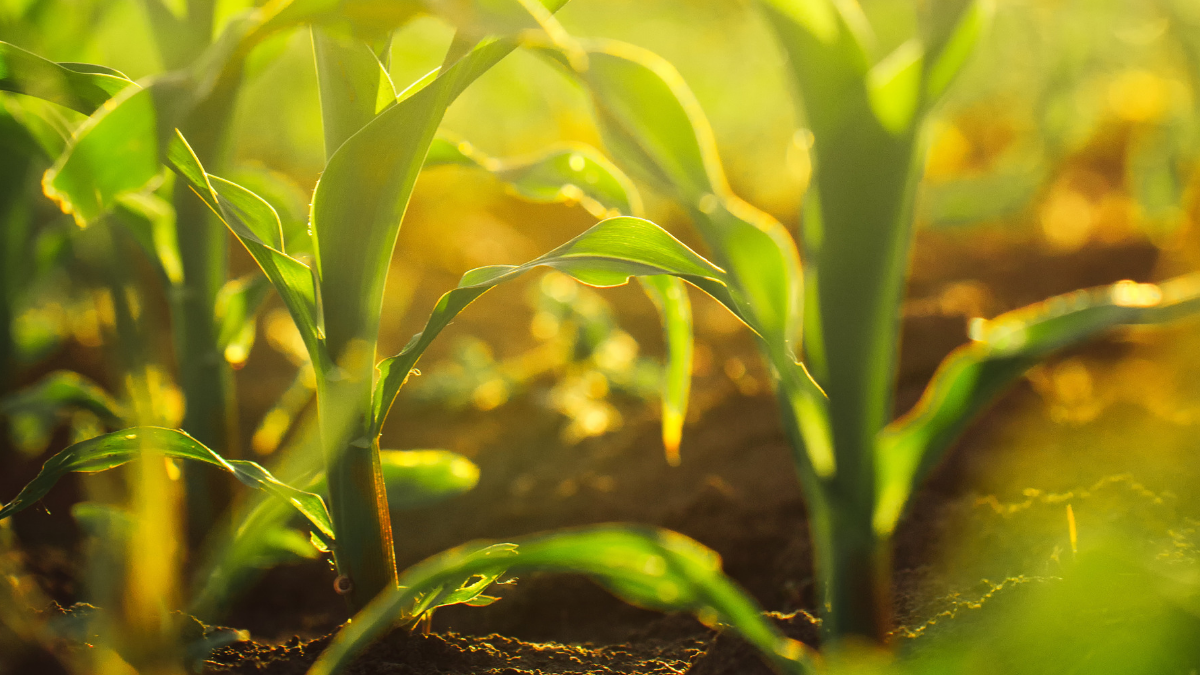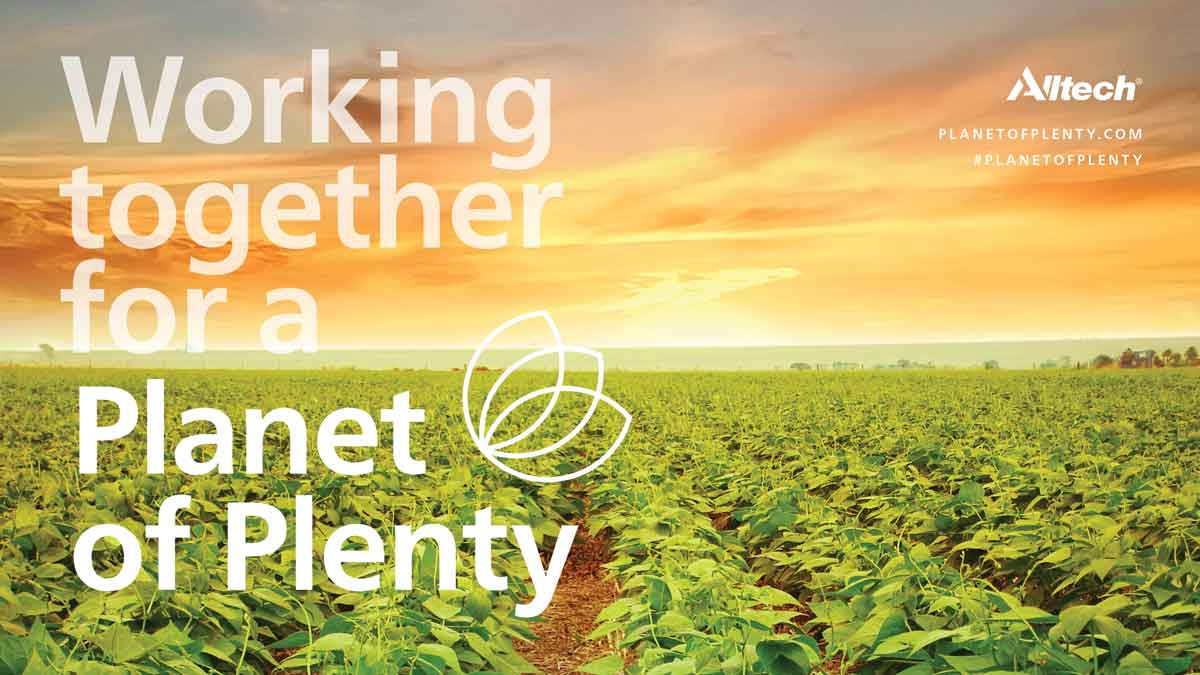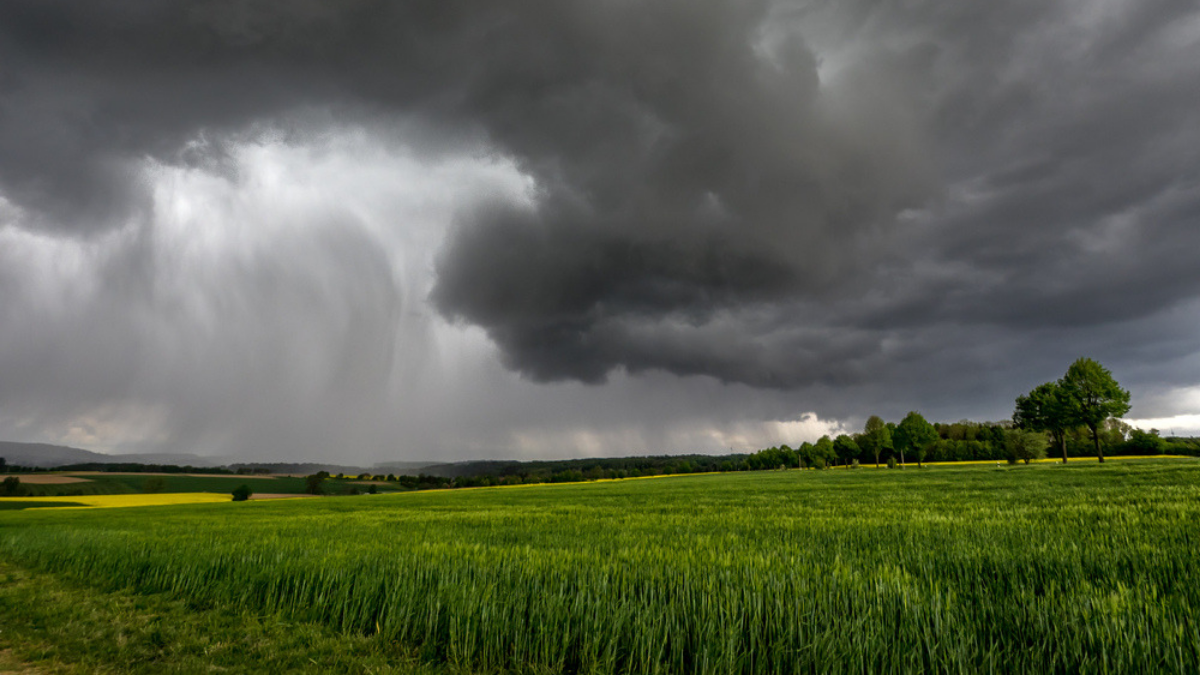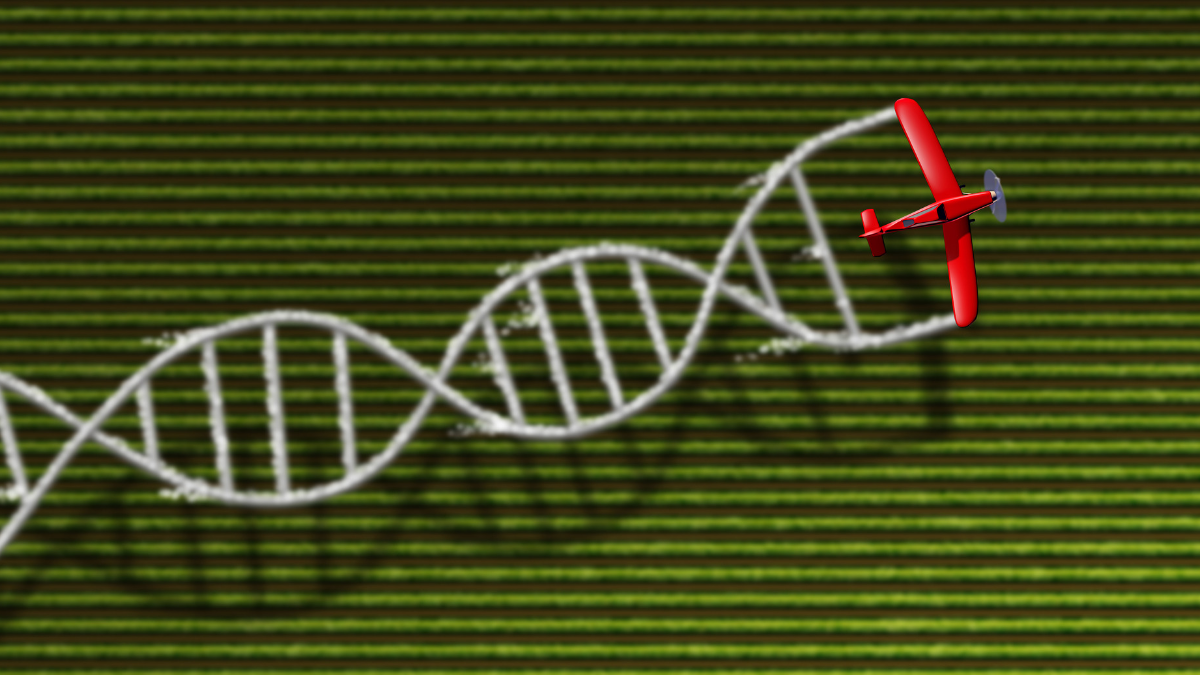Dr. Taro Takahashi: Soil health, beef production and our carbon footprint
How can better soil health and more efficient beef production reduce our carbon footprint? Dr. Taro Takahashi, research scientist at Rothamsted Research, discusses organic vs. inorganic fertilizers, proposed meat taxes and agriculture's overall quest toward sustainability.
The following is an edited transcript of David Butler’s interview with Dr. Taro Takahashi. Click below to hear the full audio.
David: I'm here with Dr. Taro Takahashi, a research scientist at Rothamsted Research in the U.K. Dr. Takahashi, thanks for joining us.
Taro: Thank you.
David: You gave two presentations at our conference (ONE: The Alltech Ideas Conference) here this year, one on soil health and one on beef production, and they have some kind of intertwined issues, so let's talk about both of them, but let's start with your thoughts on soil health — especially around the nitrogen cycling.
Taro: Yeah, sure. When I gave this talk at the Crop Science session, whereby I discussed the findings on long-term experiments with production systems — this is the oldest-running scientific or such experiment in the world, listed in the Guinness World (Record) Books. It started in 1843. What we try to identify here is basically the sustainability of the productions systems, and how can we manipulate the systems. The conversation we had with the audience there was on how the soil health could be different when you have got continuously different treatments to the soil — for example, when you apply different amounts of fertilizers, or when you apply different types of fertilizers, for example, inorganic and organic.
David: Go into some detail about the different things that you see with inorganic versus organic fertilizer. You said this soil trial started in 1843, right? That's a long time ago.
Taro: That's a long time, and this year is our 176th year. Some people just wonder why we keep doing the same thing year in and year out, but the thing about soil health is that the many soil health parameters, as we nowadays know it, are not very easy to change. For example, the total amount of carbon in the soil, it doesn't change overnight. If you have, for example, the ancillary project to work on the implication on soil health and different treatments or different farm management, then you don't actually see a lot of difference there and, therefore, you cannot derive any conclusion. By using the long-term data we have got, we can infer some of the long-term implications of what we are doing and, therefore, we can truly elucidate what sustainability really means and how we're going to achieve that.
David: I thought it was very interesting that you're talking about the different fate for nitrogen when you add nitrogen to the soil. There are two things that can happen to that nitrogen, right? Talk a little bit about where the nitrogen goes and how that system works.
Taro: Yeah, sure. When you just look at the farming systems within that single season or single year, then you tend to think that, when you apply nitrogen, it either gets used by the crops or it doesn't get used by crops. This concept, usually called the nitrogen-use efficiency, is not a very accurate summary of the long-term sustainability of farming systems because we actually have the third option of having the soil maintain them and carry over for the next year's production. If you think about the change in the nitrogen stop in the soil — or for any nutrient, for that matter — the picture is quite different. For example, when you just compare the amount of fertilizer you are putting in this year versus the amount of the grains you are harvesting this year, it does not give you the full picture.
David: Okay, so if nitrogen doesn't stay in the soil — if you have excess nitrogen and it's not around next year — where did it go?
Taro: Sometimes, there are cases where you lose them to the atmosphere in the form of, for example, nitrous oxide, which is a greenhouse gas, or it could go underground in dissolving water in the form of nitrate or ammonium. There are many ways that you could lose these nutrients, even when you apply. Our data shows that, in some cases — not all the time, but in some cases — we are losing more than half of what we're putting in, long-term, to this wastage, if you like. That's a lot of wastage in the big scheme of things.
David: It is a lot. You said more than half of it can be lost, and that's when you're applying inorganic fertilizer. Is that right?
Taro: The loss itself can happen even when you apply them in the organic form as well, but what we found interesting from this research was that, when you apply nitrogen in organic form, then we find that, unless you are putting a lot of nitrogen — probably more than 250 kg per hectare — we are actually extracting some of the nitrogen from the soil long-term. That means that even after 150 years, which we originally thought was long enough for the system to reach equilibrium, we are still losing, slightly, soil-organic carbon and soil-organic nitrogen every year. That means that there is the possibility that, if we keep doing this year in and year out, at some stage, we will not be able to achieve the same level of yield any longer.
David: So, you're saying that that loss, year after year, happens with either inorganic fertilizer or organic fertilizer.
Taro: No. Obviously, it depends on how much nitrogen you contain, so you have to come up with some comparable amount of nitrogen. We came up with a system whereby one treatment of inorganic fertilization is comparable to an organic fertilization in terms of the amount of nitrogen included in that packet of the fertilizer. When you compare them apple-to-apple, then what we found was the extraction from the soil stock is happening much less when we apply the nitrogen in the form of organic fertilizer. In our case, we use manure from livestock for it, although there are many forms of organic amendments, and then we found that these end results are most likely attributable to the carbon bonded to the nitrogen in the organic form, and then, loosely speaking, they maintain the soil health.
David: Right. You mentioned that manure is not the only form of organic fertilizer. What are some of the other forms that you might use?
Taro: Some farmers in the U.K., for example, use the straws from the previous year's harvest as a part of the fertilization system, but the challenge is that, sometimes, the composition of these residuals is quite low. That means that, unless you have got a very unfavorable condition — for example, sunshine and temperature and moisture — those nitrogen may not be able to be used in the following year immediately. Manure, on the other hand, tends to get decomposed much more quickly and, therefore, for a long-term production system, it might be an easier way to amend the soil organically.
That said, the amount of manure we need to have a comparable amount of fertilization to what is quite standard in the U.K., for inorganic fertilization, we need about 35 tons of manure per hectare, and that's a lot, so how to secure it commercially is a huge challenge. We don't know whether it's possible in the big, big —
David: On a large scale —
Taro: As a method of social change.
David: Yeah. Okay. It is very important, obviously, to make sure that any excess nitrogen stays in the soil, because all of the methods or all of the ways that you mentioned to lose the nitrogen have an environmental consequence. Nitrous oxide is a very potent greenhouse gas, and if you have nitrates or ammonia in your groundwater or leeching into your streams, that's a very bad thing as well. Do you see regulations starting to come up about that that affect fertilization rates, or do you anticipate them in the future?
Taro: One thing we have to be careful about in this inorganic or organic debate is that our research, as well as the other team's work, recently have shown that, usually, when you have got the more intensive system — for example, an inorganic system — then the carbon footprint or climate impact per ton or kilogram of the output of grain is actually lower.
That means that an organic system is not necessarily environmentally-friendlier in terms of the climate impact, and you have to really strike the right balance between the soil health and long-term sustainability in terms of productivity against the climate impact and, then, how we will deal with it.
David: It's a complicated system, and we need to keep learning more. As climate change becomes a bigger issue, we're going to make sure we're doing things that are effective and not shooting ourselves in the foot.
Taro: Yeah, exactly. That debate was the very extreme, polarizing opinions — a probably very dangerous thing to do, because we have to achieve sustainability on many, many fronts. Health is one. Climate impact is one. Ammonia is one, and there are many, many others. To just say that the organic system is a paradise is probably misleading, but what we found was that the organic system has got an ability, probably a better capability, to keep the soil healthy for a longer period of time.
David: Okay. Let's talk a little bit about cattle and the efficiency of cattle in producing food, compared to other forms of livestock. I know that's kind of a common topic, and people have assumed for years and years that beef cattle particularly have a lower efficiency than chickens or swine, right?
Taro: That's right. In terms of climate impacts, it has been established for quite some time that the cattle systems have got much higher environmental burdens compared to monogastric systems — for example, poultry systems and swine systems — and that is indeed the case if you compare, for example, 100 grams of meat cut versus 100 grams of meat cut, but what we showed and what we discussed in the talk at the cattle session this time around was that, when you convert the unit of evaluation to nutritional value of the meat, then the carbon footprint of beef meat is actually very comparable to poultry and, then, swine meat — and sometimes better than them.
David: So, you're saying that it's a more dense source of nutrients as a food than pork or chicken?
Taro: Exactly. The reason why this phenomenon is observed is because — and beef is much more nutritionally dense compared to chicken meat and pork meat. For example, it has got much higher level of minerals and vitamins and, therefore, a small portion of steak has got basically a better package of human nutrition than the white meat. In terms of the nutritional value, the carbon footprint can be lower than white meat, and that is very encouraging news for beef farmers around the world.
Having said that, the nutrient density does not mean a lot if you overeat, because if you eat a lot of nutritionally dense meat, then (a) you don't actually need to eat that much and (b) you are probably contributing more to carbon footprint anyway by eating more. Our finding doesn't negate the fact that cattle do produce methane from enteric fermentation far, far more than pigs and chickens, for example, but then, it does mean that when you look at the nutritional value, and if you eat red meat in moderation, then you have got the chance that then it is part, or it can be part, of the very sustainable food systems.
David: It's a good point that cattle do produce methane to a greater degree than poultry or swine, but it's also worth mentioning that they can eat cellulose and fiber and convert that to meat to a much greater degree than poultry or swine, right?
Taro: Absolutely. In the U.K., as well as in the USA, there are many parts of the country whereby, traditionally, we have not been growing any cereals at all. The reason is that, well, grasslands are there for a reason, and we have traditionally thought that cereals do not grow there very well.
David: Let's talk about the idea that's come out recently of a meat tax. I know that there have been some stories in the press proposing that we should have a tax on meat to try to cut down on the greenhouse gas emissions from animal agriculture. You talked about some unanticipated consequences of that, and, of course, every time there's a public policy debate, there are a lot of anticipated consequences that need to be carefully examined.
Taro: Yeah, absolutely, and we found them — this is a very interesting thing about the potential consequences of meat tax, and especially the tax against these production systems. We created the macroeconomic model to see what did really happen to the economy — not only the farming economy but the national economy — when you tax against beef production. What we found was that, just as the advocates of the meat tax argue, we also found out that the greenhouse gas emissions at the national scale will be lower, because many big producers will be deterred from producing more of the red meat.
However, we also found that the macroeconomy in the U.K. would shrink as a result of this taxation, and the reason is that, as I mentioned earlier, there are many lands that are not really suitable for the arable systems. So, if farmers are forced to change their farming systems on the traditionally grassland area, then that means that we will not achieve as much production and, therefore, we would be using the land endowment inefficiently. Land is one of the few resources that we have absolutely no control over in terms of the total amount available to us, and therefore, if you cannot make the most of it — if we use them forcefully in an inefficient manner — then of course we will struggle, macroeconomically speaking.
David: Yeah, and I assume, if we are not producing meat on grassland and there's a push to produce more crops, then that means, potentially, more deforestation, which is a huge problem for greenhouse gas emissions.
Taro: I'm not sure if deforestation will happen or not, but then, what we're interested in and what we decided to measure from now on is the loss of carbon when we convert grassland into arable land. These experiments have been taking place in many parts of the world, but then, they are mostly in the area whereby we've already believed that we can produce a lot of cereals for human consumption.
What we have decided to do to test this question, really, and to challenge our thinking process, if you like, is to convert one of the four farms we have got on our resuscitation in Devon that is traditionally a grassland area, a farm specialized in the production of the human edible food. So, by doing that, we have to plow up the permanent grassland that we have got here for a long, long period of time, and in so doing, we can measure how much carbon we would have to release from the soils. If that happens, then, obviously, the fertility of the soil will be lower as well. That means that, potentially, the arable production might not be as high as we think because, long-term, we will again lose carbon, and that is shown by our experience from the long-term experiment.
David: Thank you very much, Dr. Takahashi. We've covered a lot of interesting topics here, and I appreciate you spending some time with us.
Taro: Thank you for having me.
Dr. Taro Takahashi spoke at ONE: The Alltech Ideas Conference (ONE). Click here to learn about ONE and how you can access innovation on demand.
- Read more about Dr. Taro Takahashi: Soil health, beef production and our carbon footprint
- Log in to post comments

Are cattle really less efficient at producing food than chickens and swine?






















